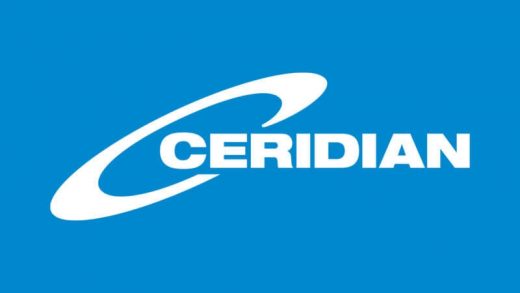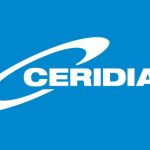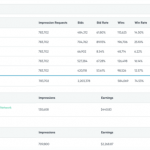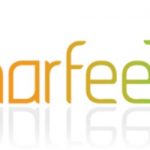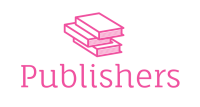Ceridian CMO says internal communications are key to branding through an acquisition
CMO Kristina Cleary shares the branding strategy that drove Ceridian’s acquisition of Dayforce in 2012.
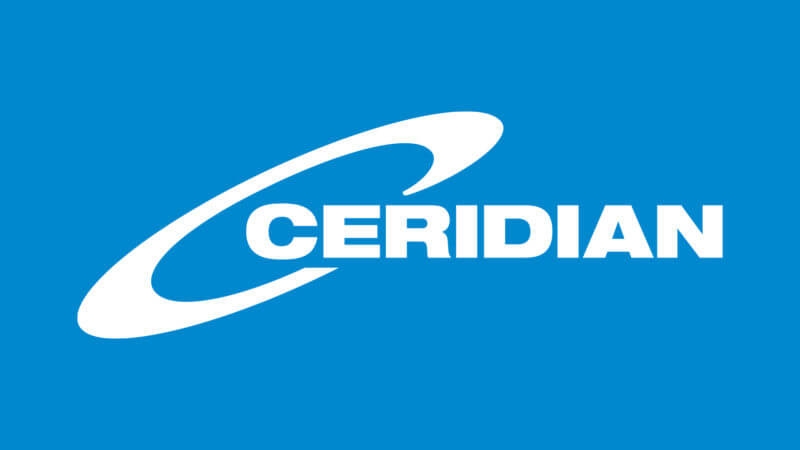
Five years ago, Ceridian, a human resources management platform, acquired Dayforce, a cloud application focused on managing the entire employee process from hire to retire.
“Ceridian had always had its roots in payroll,” says Ceridian CMO Kristina Cleary. “It was actually founded in 1932, and has always managed payrolls for some of the world’s largest organizations.”
According to Cleary, Ceridian originally partnered with Dayforce to find a time and attendance-vendor to complement its payroll solutions. Before the acquisition, Cleary was the vice president of marketing for Dayforce.
“Ceridian, at the time, had been partnering with a bunch of other solutions that weren’t necessarily meeting the needs of its customers, so it was looking for a new solution.”
Cleary says Dayforce initially met with Ceridian during a trade show event. At first, the conversation centered on developing a partnership where Dayforce could fill in the gaps around the time and attendance management needs for Ceridian’s customers.
“What that turned into, about a year later, was a broader partnership where Dayforce had committed to actually building out a cloud payroll solutions for Ceridian — which became the end-to-end application that it is today,” says Cleary.
When Ceridian acquired Dayforce in 2012, Cleary was named the senior vice president of global marketing for Ceridian. In 2016, she was named CMO.
“Since the acquisition, I’ve assumed growing responsibilities, expanding my reach across our operations” says Cleary, “I have been able to take a look at all of our marketing operations, and identified the the areas of success, and obviously, areas where we can improve as well.”
With the acquisition now just over five years ago, Cleary has a large-scale view of what the branding process was like — bringing Dayforce into the Ceridian umbrella — and is sharing what she learned from the experience.
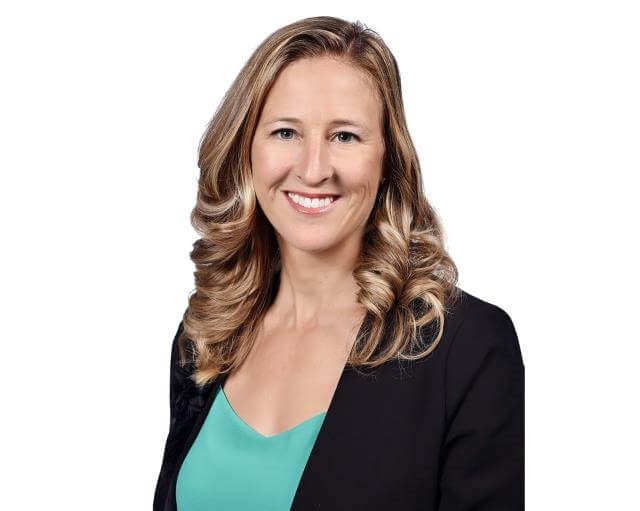
Kristina Cleary
CMO @ Ceridian
Takeaways:
1. Be agile: An agile mindset has driven a shift in how we operate. We are now more flexible and open to new strategies, and we’re in a better place to adapt to change.
2. Define your purpose: Our marketing organization has transformed from a service provider following direction from other departments into a value-driver committed to growing revenue. Determining a purpose and communicating that purpose to your merged team will drive alignment within the group and will create a common goal to strive toward.
3. Understand the value you deliver: Pre-acquisition, Ceridian and Dayforce customers came to the two companies for different reasons. As a merged team, we had to align our brand vision, and ultimately we developed our “Makes Work Life Better” tagline to communicate our brand promise.
Amy Gesenhues: To start, can you give me a brief overview of Ceridian and Dayforce before the acquisition?
Kristina Cleary: Pre-aquisition, Ceridian was definitely viewed by some as an older business. I would say it was considered a more dependable payroll player. The company did have a fairly disengaged work force, a low Glassdoor rating, and, in general, the business was declining. And then entered Dayforce, which was a nimble startup with a cloud application for HCM [human capital management] on a single platform.
Since the acquisition, Ceridian has now quickly transformed from what would be a legacy payroll player to a growing business — and an agile business, just like its startup competitors that are in the market. As a result, we’re seeing real market growth.
In fact, our Dayforce product has seen revenue growth at a five-year rate of about 67 percent, which is just phenomenal, and, obviously, above market average. Today, I would say we’re one of the largest global payroll and HCM providers.
We have 3,300 customers on our Dayforce application alone, and our presence is in over 50 countries, and we’re just seeing continued growth every year. It’s been an amazing trip.
AG: Do you account Dayforce’s growth to Ceridian’s much wider audience, or are there other factors that have impacted its growth rate?
KC: The growth is actually accounted to net-new business. It’s a huge market out there and every organization needs to pay its employees, pay them accurately, and on time.
The market really had a lot of legacy players, old systems that were maybe 25, 30 years old. With the shift to cloud technology, organizations were really in need of figuring out where they could do their payroll in the cloud. So there is definitely a natural market out there of net-new clients.
The Ceridian legacy customers were obviously another target market. But even if we looked at that legacy base, there was no way that we had the capacity to move all of those customers over to our Dayforce solution. So many of our 3,300 Dayforce customers are net-new clients.
We do have a whole program called MyMove that applies to our Ceridian legacy customers, where we actually work with them to plan what is an ideal time frame for them to move over to the new application, if that is even of interest.
That was a branding exercise unto itself, with its own logo, programming and everything.
AG: What were some of the campaigns you launched connected to the acquisition?
KC: There were several key marketing campaigns as part of this acquisition. First and foremost was the launch of a “Brand Promise” handbook, which was done fairly soon after the acquisition. That program was called “Our Way.”
When you have the merging of two very different cultures, in order for the two organizations to merge into one team, you definitely have to bring them together and make sure everybody’s on the same page — so we launched “Our Way.”
It was basically a mantra about Ceridian’s culture, values and way of acting. It was a manifestation of the brand promise we make to our customers, which is, “Makes Work Life Better.” Initially, it served as a roadmap as to how we were going to achieve our values as a larger team.
This got everybody from Dayforce and everybody at Ceridian onto the same page and in alignment in terms of: What was our reason for living? What were we gonna deliver to our customers? And what are the values that we truly believe in?
We rolled out this concept, actually internally and externally, through various ways, meetings, workshops.
We created a book that we could hand out. We discussed and shared case studies that featured our customers and our employees, and examples of how they were living our way and our culture and our values.
Today, the impact that “Our Way” has had on our culture, and the success of our business, is evident everywhere. In terms of our customer stories that we can share, in terms of the embracing of our values by our employees, and how they’ve embraced those and really delivered them. And how we’ve come together as one organization, and how we continue to grow at this rapid pace.
AG: It sounds like internal communications was a big part of your marketing initiatives during the acquisition.
KC: For sure. Communications with any acquisition is the number one thing you have to get right.
For us, our CEO, who was originally the CEO of Dayforce, David Ossip, was really a driving force between the five values that we rolled out. The number one value that really changed the entire culture at Ceridian and Dayforce, and that drove change internally as well as with our customers, was transparency.
And, having a CEO who was open, honest, approachable, and who would stand up at town hall meetings, and any office, doing an hour of taking questions and giving answers no matter how difficult the questions were. Who would attend customer meetings, would stand up at a customer conference that had over 2,000 people and do open-mic Q&A sessions.
That was definitely different from the culture the Ceridian-side had experienced in the past.
AG: What was the process when it came to branding the company and product names with Ceridian as the umbrella brand, and Dayforce as one of its product platforms?
KC: This was definitely something that wasn’t easy.
Because Ceridian had been around since 1932, there is a lot of brand equity with the name Ceridian in the markets that we are in. Ceridian’s high reputation is built on trust, and the Ceridian clients, at that time, knew Ceridian as a payroll provider that they could rely on to get the job done.
There was a lot of good brand equity in Ceridian, but the one thing that it was missing was an innovative technology identity. That’s what Dayforce brought to the table. Right now, Dayforce is the main cloud product for Ceridian, but Ceridian is the company name.
We have a few products under the Ceridian umbrella. We have simplified the business over the last five years. There were a lot of other products in the last five years, but as part of the acquisition, we’ve made a commitment to simplify the business. At this point, the transformation into a cloud company is now complete.
AG: Looking back, what was the biggest challenge when managing Ceridian’s branding initiatives through the acquisition?
KC: Before the acquisition, customers would approach Ceridian and Dayforce for different reasons. Ceridian customers would know they could trust the company, it was an accurate payroll provider. Whereas Dayforce clients were inspired by the way its technology could transform their companies.
We needed to find a way to convey these combined values post-acquisition. That’s why one of our solutions was to create a new tagline in the brand’s vision, which has evolved to “It Makes Work Life Better” — where our commitment as a combined organization is that we make work life better for employees and organizations.
This ties the trust our customers placed in Ceridian as an accurate and reliable payroll provider with the innovative impact of the Dayforce technology.
AG: Now that it’s been five years, do you think you’ve finally reached a point where people know Dayforce is part of the Ceridian brand?
KC: I think our customer base is very well aware. We have enough interaction and we’re transparent enough with our customers that I think they’re aware.
There’s definitely a gap with people who are not in our customer base. So when we’re talking to prospects, or other target markets, media analysts, etc., telling our transformation story, there’s a lightbulb that goes off when I start telling it.
Even potential employees — actually, that’s where I find there is a real gap. When people think of Ceridian, there’s still a large portion of people out there who think it’s a payroll provider. They’ll say, “You’re the old payroll provider.”
When you actually start sharing the story of what’s happened over the last five years, they’re shocked. For me, from a potential employee standpoint when I’m recruiting for marketing, the reaction I get is, “I want to join this team, I want to be part of this story.”
And it’s the same thing with the analyst community we work with very closely. I found last year was an inflection point. They started recommending candidates to my marketing team, telling them, “This is the place where you want to be in the market. This is the team you want to work on as a marketer.”
Which for me, obviously, was a huge turning point and something to be very proud of. I loved when that started to happen and I started to witness that.
I think, this year, there’s still work for us to do in terms of taking this story, and taking our accomplishments, and making sure that the entire world is aware of it.
AG: What are your plans to push this story forward?
KC: One of the main platforms where I think we can really tell a story is going to be video. Obviously, there’s a proliferation, in the market right now, of video because it’s one of the best ways to tell a story. It’s emotional, it’s impactful, and it’s entertaining.
I have made a commitment with my teams to win best in video as a marketing medium this year to tell our story. And we’re starting to capture those customer stories on film where they’re actually telling the story of how our products and services are making the lives of their employees better.
Hearing them tell it — they do such a better job than we ever could. It resonates a lot with the market. So video of our customers, video of our employees, and the stories that they tell.
Actually, some of the most impactful videos that I’ve seen over the last three weeks came to me from an internal conference. It was from our sales kickoff, where we interviewed eight people about stories they’ve heard in the field.
They were able to articulate the stories with people — one where they were in meetings, and the sales person is in the meeting, and this lady started to tear up. He talked to her on break and he said, “I just noticed that you became emotional, is our demo okay? Is our presentation okay? I want to make sure that we’re on track.”
She said, yes and told him, “I’ve been doing payroll for 27 years, and I just realized for the first time in 27 years, I’ll be able to go home on a Friday at 5:00 p.m. like all my colleagues because I won’t have to stay here and make sure that payroll is correct. I know that it will be done right.”
When you hear powerful stories like that, and you capture them on video, that’s definitely going to be a medium where we’ll be able to effectively tell those stories well, and share those stories of our transformation as well as our products.
AG: Was video marketing something you leveraged before the acquisition?
KC: It is something we did in the past, but it was not strategic. It was very ad hoc. We had one video person who actually, it was like an intern — video became their default role because of all of the changes that had taken place.
They were taking orders on when we needed video. There wasn’t any strategy around the messaging, who the target audience was, or who was delivering the message, even. Now we’re putting a lot more planning and strategy into what is the most effective message we can tell: How are we going to use this video? How are we going to deploy this video? And how are we going to extend the longevity of this one video so that it can be as impactful as possible?
So, I’d say, video did exist before, but not in the way that it will now.
AG: What about marketing efforts you were doing before the acquisition that you were able to leverage on a much broader scale post-acquisition?
KC: We continue to leverage the existing platforms where we had success, and, obviously, simply expanded those programs to be bigger and more impactful.
With the merging of the Ceridian and the Dayforce marketing teams, we had more people, and we had a larger budget once it was combined.
For revenue-generating activities — this includes the use of things like account-based marketing, where we had tremendous success — we worked in collaboration with the sales organization to target very specific accounts. We started doing some very specific targeted campaigns.
AG: What were the most significant branding lessons you took away from working through the acquisition?
KC: There were a lot of lessons, that’s for sure. It has been a fast and furious transition, and I had the opportunity to be part of something that I don’t think many marketers get to be a part of.
For me, it’s been a very positive experience. If I were to go back and tell myself some words of advice, I would tell myself to make sure that I embrace every experience as a learning opportunity, and to know that even though it’s difficult, it is something that you can learn from.
I would say only bring your patience, because no matter how fast you are moving, change takes time. Some people adapt quickly, and other people don’t adapt. Change management is critical, and it’s more important than you think as part of this process.
Another key learning for me has been to make sure I hire and retain the best people possible — and that’s if you are going through an acquisition, or if you’re simply growing a business. It all comes down to the people you’re working with.
That has been critical for me as a marketing leader.
Marketing Land – Internet Marketing News, Strategies & Tips
(49)

